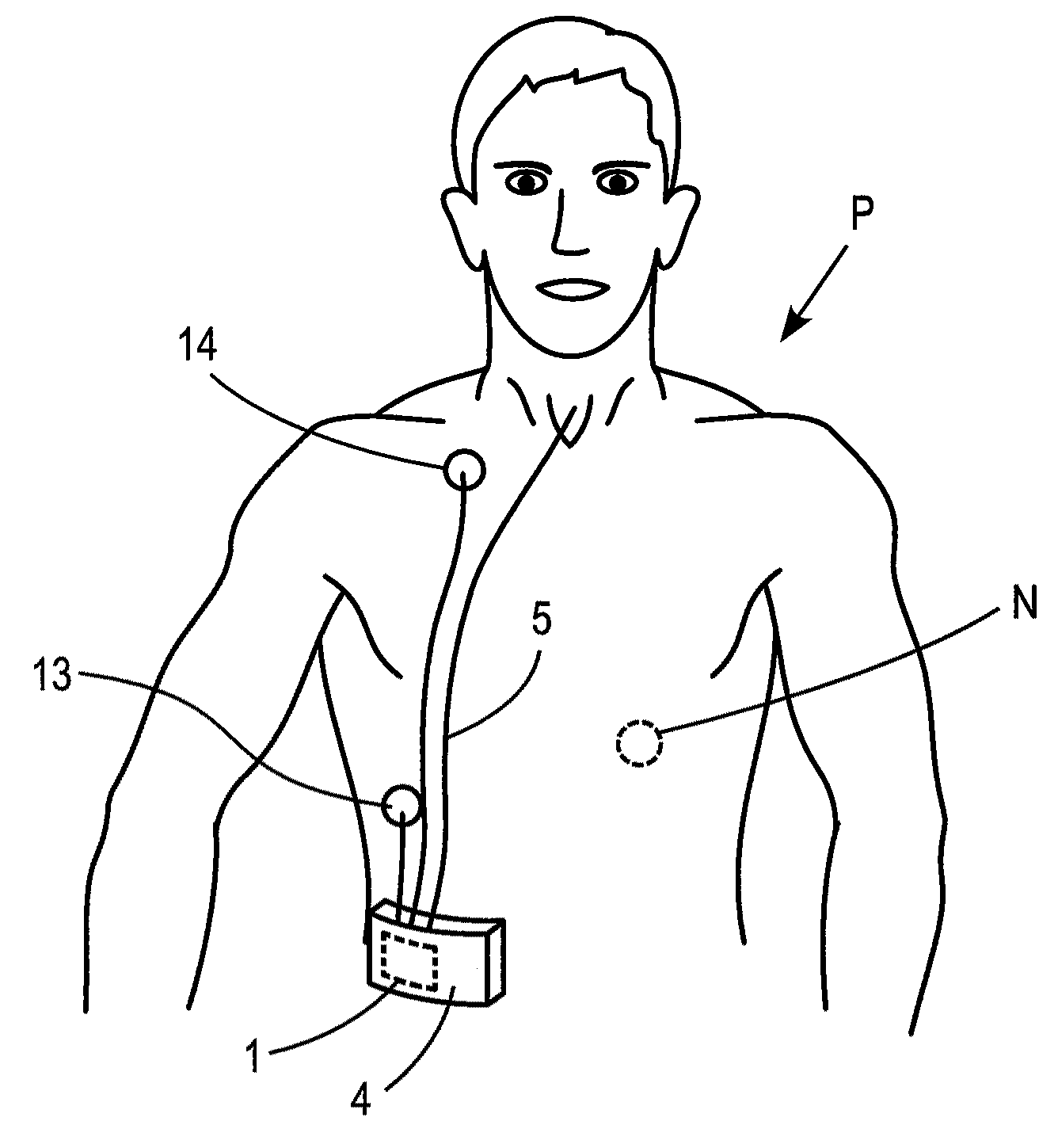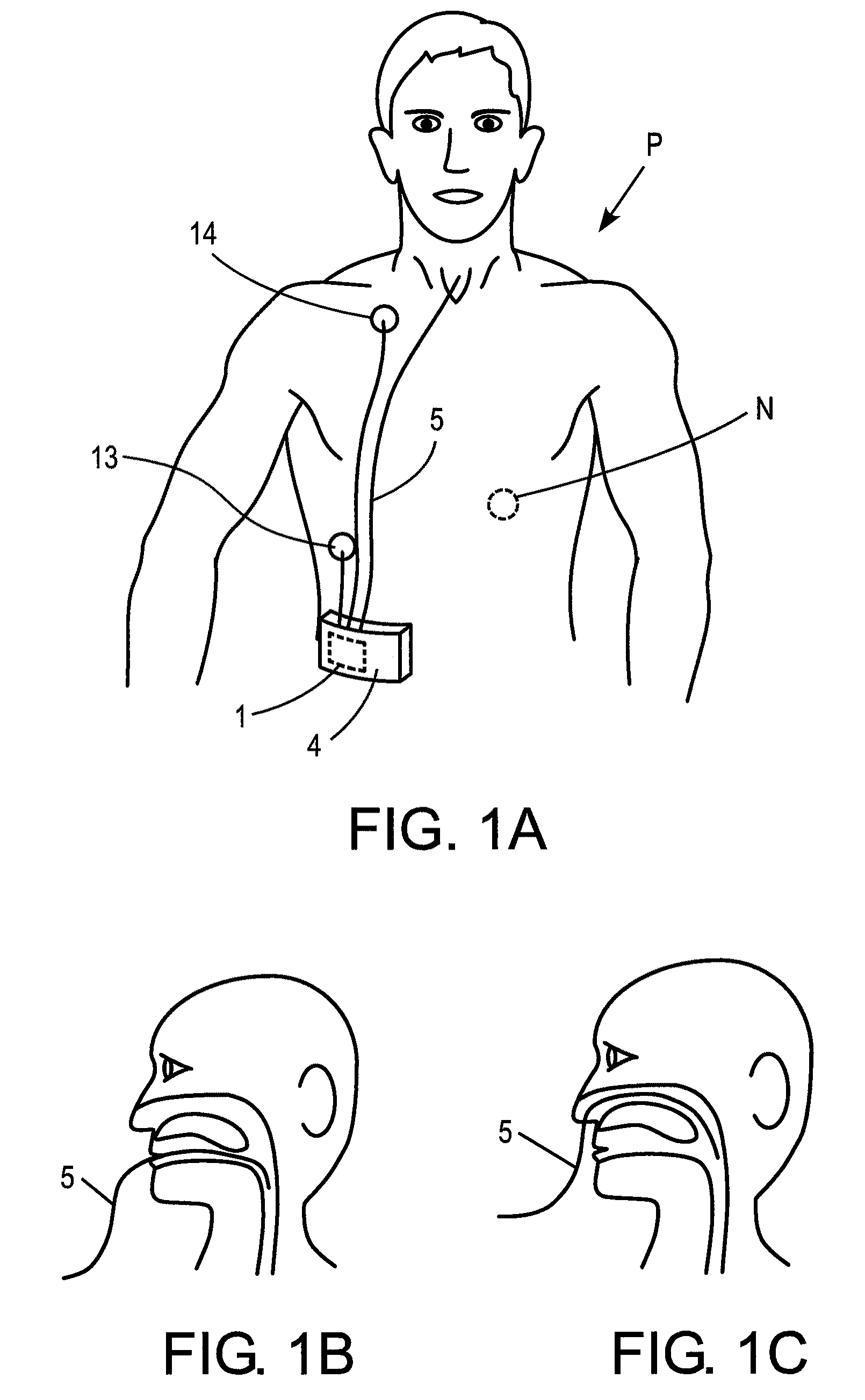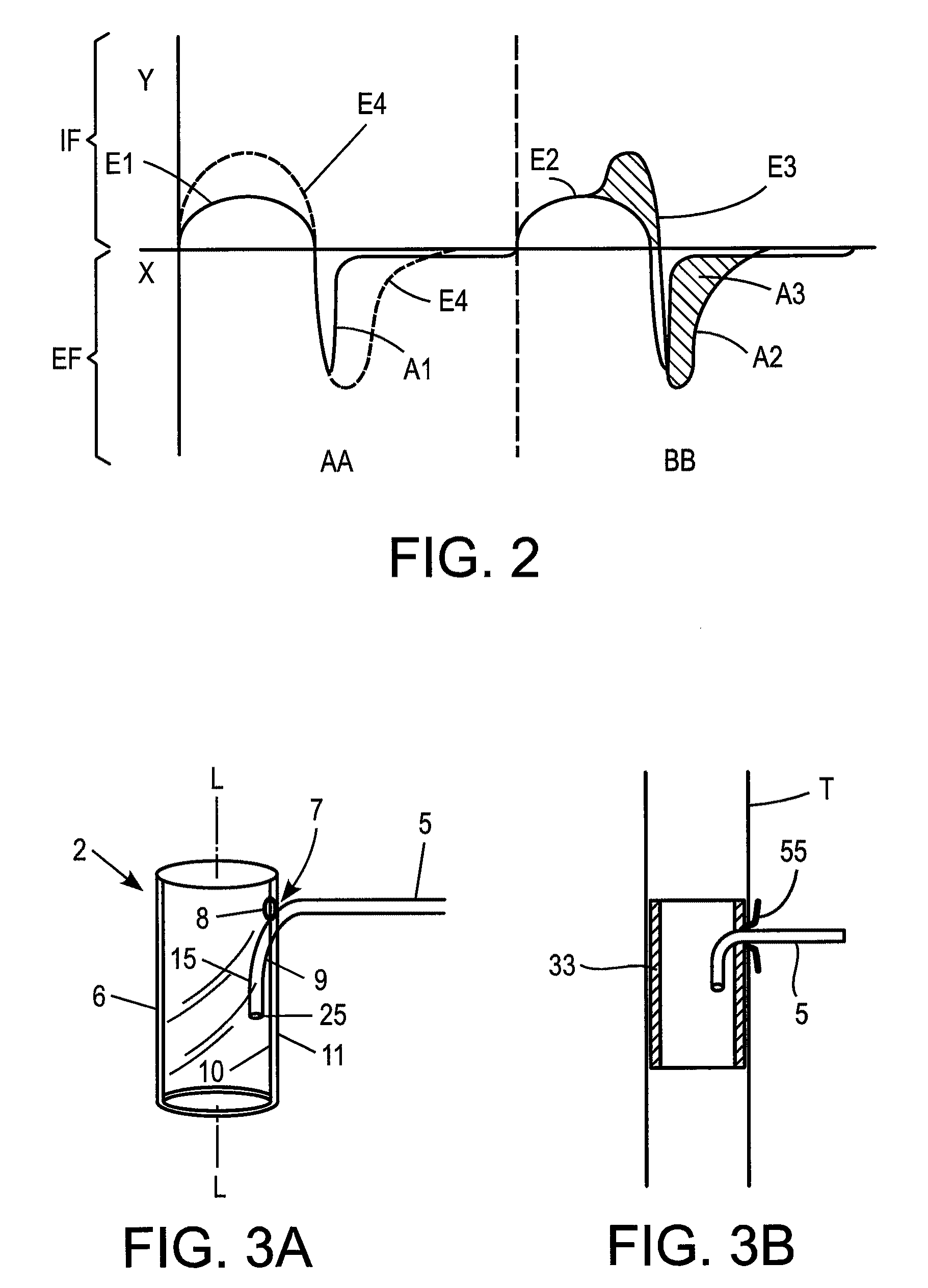Systems, methods and apparatus for respiratory support of a patient
a patient and respiratory support technology, applied in the field of respiratory systems, can solve the problems of patient inability to inhale deeply, patient inability to maintain breathing, and respiratory path is usually extremely slack and tend to collapse, so as to improve the quality of life of patients and the effect of efficient way of supporting the respiratory support of patients
- Summary
- Abstract
- Description
- Claims
- Application Information
AI Technical Summary
Benefits of technology
Problems solved by technology
Method used
Image
Examples
Embodiment Construction
[0011]The invention includes systems, methods, and apparatuses that improve the quality of life for patients that require respiratory support. These respiratory systems, methods, and apparatuses can provide a more efficient way of supporting the respiration of a patient by providing additional oxygen when needed in accordance with the principles of the invention.
[0012]In one embodiment, a tracheal prosthesis and a catheter in accordance with the principles of the invention can provide for respiratory support that can be synchronized with the spontaneous respiration of the patient and still allow the patient to speak.
[0013]Additional features, advantages, and embodiments of the invention may be set forth or apparent from consideration of the following detailed description, drawings, and claims. Moreover, it is to be understood that both the foregoing summary of the invention and the following detailed description are exemplary and intended to provide further explanation without limit...
PUM
 Login to View More
Login to View More Abstract
Description
Claims
Application Information
 Login to View More
Login to View More - R&D
- Intellectual Property
- Life Sciences
- Materials
- Tech Scout
- Unparalleled Data Quality
- Higher Quality Content
- 60% Fewer Hallucinations
Browse by: Latest US Patents, China's latest patents, Technical Efficacy Thesaurus, Application Domain, Technology Topic, Popular Technical Reports.
© 2025 PatSnap. All rights reserved.Legal|Privacy policy|Modern Slavery Act Transparency Statement|Sitemap|About US| Contact US: help@patsnap.com



